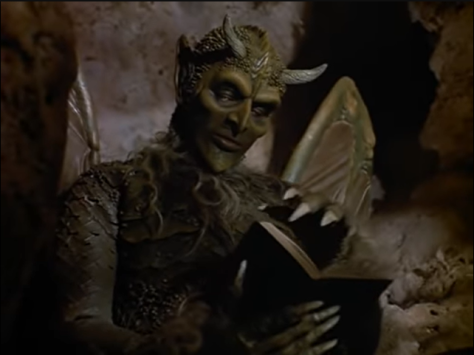
Monster movies were in a bit of a slump in the seventies, but began to pick up steam starting in the eighties. This, I think, can primarily be attributed to the rise of increasingly complicated special effects, and the dedicated studios producing those effects that started pushing the limits on the imagination and believability of monsters in film. Once monsters stopped looking so much like guys in rubber suits, a number of possibilities began to open up, and movie studios noticed. Stan Winston and his studio were among the pioneers in that space, providing award-winning effects for some of the biggest movies of the eighties and nineties.
But before he could be the director of Pumpkinhead, Winston had to start somewhere, and that somewhere was the 1972 TV movie Gargoyles, his first credited work as a make-up artist (a credit that he apparently had to fight for), which won the 1973 Emmy in the make-up category alongside effects overseers Ellis Burman Jr. (“prop manufacturer” for Prophecy) and Del Armstrong. You can tell that they really wanted to emphasize the make-up effects in this thing because they include several publicity shots and scenes of the titular gargoyles in the opening narration as it slips from quoting Paradise Lost to giving an entire history of gargoyles before we’ve had a chance to catch our breath. Seeing the monsters before the movie even begins would seemingly spoil the surprise, but I guess the question is…what surprise? This is a TV movie made in 1972.






